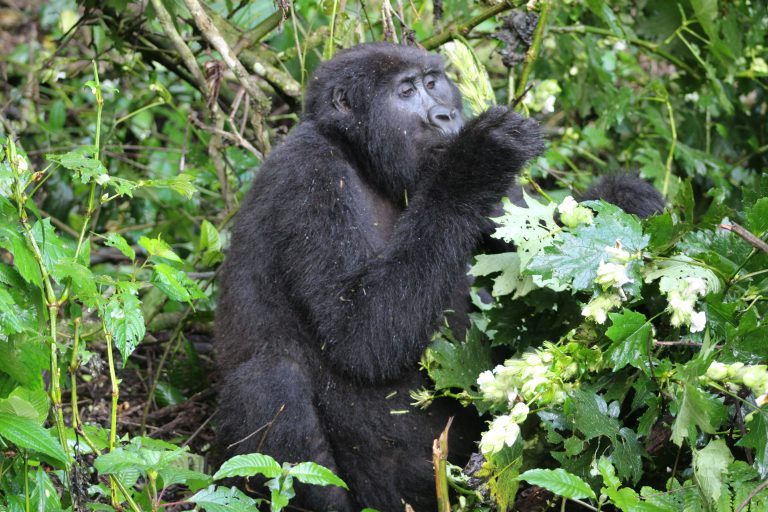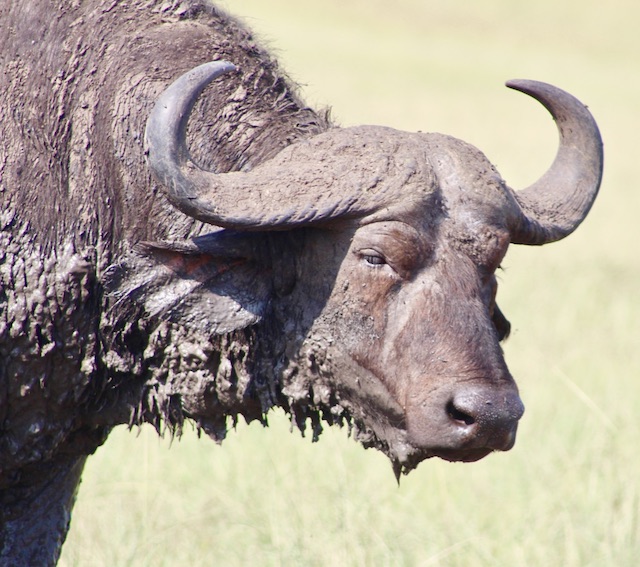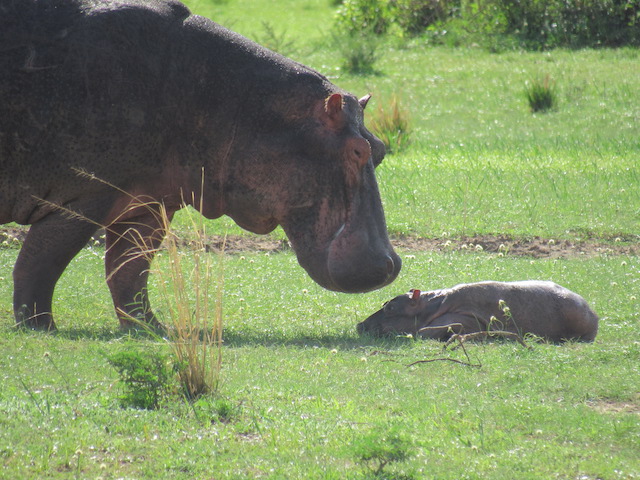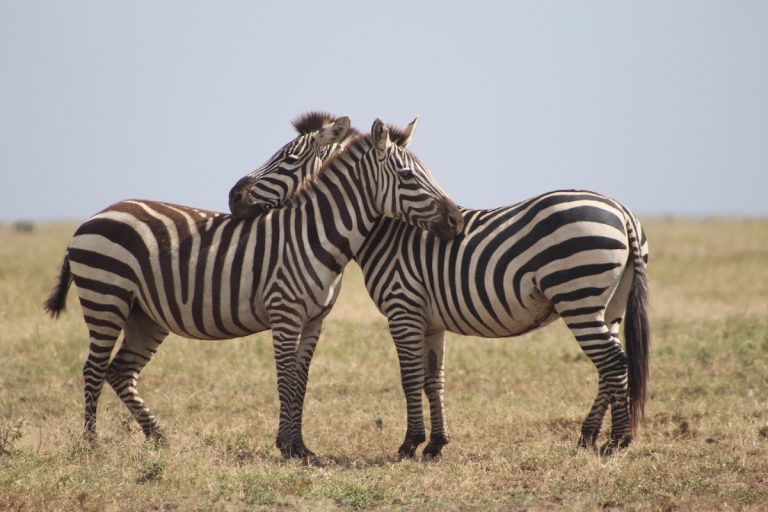Lake Manyara National Park is located in northern Tanzania on the edge of the Rift Valley beneath the cliffs of the Manyara Escarpment. This is park is among the top destinations for Tanzania safaris. Named after its eponymous alkaline lake, Manyara. The Park serves as a critical home for hundreds of bird species, and provides diverse habitats for wildlife and stunning vistas. Its groundwater forests, bush plains, baobab-strewn cliffs, and algae-streaked hot springs provide incredible ecological habitats for its rich wildlife and bird life. Lake Manyara National Park is located about 126 kilometers southwest of Arusha and is the ultimate safari stopover for travelers on African safaris to the Serengeti national park and Ngorongoro Crater. The park has a total size of about 325 square kilometers, including a lake surface area of 230 square kilometers.
Lake Manyara National Park is home to a diverse population of wildlife including an impressive population of tree-climbing lions; whose unique tree-climbing persona is witnessed in only one other destination in Africa – Uganda’s Queen Elizabeth National Park. Furthermore, Lake Manyara is home to thousands of greater and lesser pink flamingoes that flock its shoreline, as well as pink-backed pelicans, yellow-billed storks, grey herons, and hippo pools, that congregate on its beaches. The lake is surrounded by marshlands, grassy plains, and acacia forests, which are home to long-tusked elephants and giraffes, that can be seen prancing through, grazing with herds of buffalo, gazelle, zebra, and wildebeest etc.
In addition to wildlife drives and walking safaris, visitors to Lake Manyara National Park may enjoy sundowners and relax in the warm clear water of the Maji Moto hot springs while shaded by lush trees, and canoeing among other activities.
Attractions in Lake Manyara National Park
Wildlife
Lake Manyara National Park is rich in animal diversity, and its large wildlife population makes it one of the greatest sites for Tanzania wildlife safaris. Lake Manyara National Park has an incredible variety of vegetation zones including acacia forests, woodlands, floodplains, and groundwater forests which are all-natural habitats for species such as Elephants, leopards, lions, giraffes, wildebeests, zebras, impalas, banded mongoose, Kirk’s dik-dik, bohor reedbucks, etc. These can mostly be seen in the acacia trees and woodlands to the south of the Msasa River and the coastline Park’s floodplains. The groundwater forest on the other hand, located just a few meters from Lake Manyara is home to the largest troop of baboons seen anywhere in Africa. It also hosts other primates such as blue monkeys and vervet monkeys that travelers may easily discover during their Lake Manyara game viewing safari. Large numbers of hippos and klipspringers also thrive at Lake Manyara’s Hippo Pool. Other wildlife species to expect on a game viewing safari in Lake Manyara National Park include; bushbucks, bat-eared foxes, honey badgers, warthogs, servals, the African golden cat, spotted hyenas, black-backed jackals, mongoose, cheetahs, African wild cat, to mention but a few.
Birdlife
Lake Manyara National Park is among Tanzania’s top birding safari destinations. It is home to a plethora of bird species – over 400 recorded species; including 40 species of birds of prey. Among these include the flocks of thousands of flamingoes that congregate to eat along Lake Manyara’s shoreline, as well as the great white pelican which may also be seen in high numbers. Moreover, the groundwater forest to the north of the lake is a well-known breeding site for thousands of pink-backed pelicans, storks, herons, and Marabou storks, to mention but a few. The birds of prey in Lake Manyara National Park also include the palm-nut vulture, crowned eagle, and Ayre’s hawk-eagle, among others. Lake Manyara National Park offers spectacular bird-watching throughout the year; however, a variety of flamingos and other water birds are normally only encountered in modest numbers during the dry season. More so, migratory birds are preset from November to April while the breeding plumage in the park is often in June (during the dry season).
The Underground Forest
The underground forest in Lake Manyara National Park is a thick forest near the northern end of lake Manyara. The mysterious forest derives its water from subterranean rivers, springs, and streams, as opposed to traditional rain forests that rely on heavy rainfall. It is thickly inhabited by evergreen mahogany trees and wild date palms that are fed by a regular supply of groundwater. The forest is home to Tanzania’s first tree-top canopy walkway and t hosts a variety of creatures ranging from monkeys and birds to gorgeous tree and plant species. The groundwater forest is a fascinating site to visit for lovely nature walks and experiences.
Maji Moto Springs
Maji Moto Springs, which means “hot water,” are natural springs in Lake Manyara National Park. The spring is a beautiful hidden refuge with crystal-clear springs surrounded by palm and fig trees. The springs are a popular spot for picnic lunches and swimming in the park, amidst splendid animal sightings.
The Hippo Pool
The hippo pool in Lake Manyara National Park is located in the Simba River and draws a large number of animals like hippos, klipspringers, and many others.
Activities in Lake Manyara National Park
Game Drives
Game drives in Lake Manyara National Park include both daytime and nighttime game drives. Game drives in Lake Manyara are conducted along the lower slopes of the Great Rift Valley which boast a variety of elephants, buffalo, lions, antelopes, and cheetahs, as well as bird species and the magnificent woodland vegetarians of groundwater. The night game drives, are unique for encountering nocturnal creatures including genets, leopards, civets, and hippos as well as birds.
Birding
With over 400 species of birds, Lake Manyara is unquestionably a birders’ paradise, with several species distributed over its savanna plains, the wooded region including the groundwater forest, along the springs, and lake shores. Aside from its alluring colonies of pink flamingoes, birders to Lake Manyara can also get expect to find pelicans, woodpeckers, flycatchers, herons, hornbills, storks, eagles, and egrets, among others.
Tree-top Canopy Walk
The tree-top canopy walk in Lake Manyara offers Tanzania’s first and only tree-top canopy walkway. You will spot monkeys and birds walking through the underground forest at tree-top height. You will also be able to spot the very attractive Maasai pastoralists that populate the area. Moreover, other mountain bike trips and escarpment forest treks may be done outside of the park.
Canoeing
Lake Manyara National Park provides canoe rides in which you will paddle silently around the lake shoreline with an expert guide. During this amazing trip, you will be able to see hippos floundering in the water, elephants, buffaloes, gazelles, water bucks, giraffes, and others along the water banks, as well as several water birds such as fish eagles, cormorants, bee-eaters, hornbills, and pink flamingoes.
Visit Mto Wa Mbu Village
While on a Tanzania safari to Lake Manyara National Park,tourists may visit the Mto Wa Mbu traditional hamlet located at the park’s entrance and be able to interact with the local people and learn more about their culture, traditions, and lifestyle. Tourists will also be able to visit the native small farmlands, banana plantations, health centers, and primary schools: they will also enjoy tasting their local dishes, learning how local beer is made from bananas, traditional entertainment dances, songs, and drama, as well as tribal painting.
Best Time to Visit Lake Manyara National Park
While Lake Manyara National Park can be visited at any time of the year, the ideal time to visit is during the dry season, which runs from June to October. During this season, the park’s vegetation thins out and animals congregate near water sources to drink, providing you a chance to view numerous species.
However, Lake Manyara National Park may also be visited during the wet season, especially from November to April, when visitors can catch the migratory birds from Europe and Northern Africa: thus, this is the finest period for bird watching. Birding in Lake Manyara is also good at the end of the rainy season in June when birds are nesting.
How to Get to Access Lake Manyara National Park
By Road
Lake Manyara National Park is located 126 kilometers southwest of Arusha and can be accessed both by road and air. By road, the park may be accessed from Bahati, the capital of the Manyara area, which is the most common mode of transportation for visitors to the park along the northern safari circuit. The Park lies on the famed Ngorongoro Crater and the Serengeti National Park road – other destinations that make up the Northern safari circuit.
By Air
By air, flying into Kilimanjaro International Airport (KIA) is the best option to get to Lake Manyara National Park. Charter flights from the Serengeti or Arusha link to Lake Manyara Airstrip. From there, you may take the road to the park gate, which is roughly a 30-minute drive.
Accommodation in Lake Manyara National Park
- Lake Manyara Wildlife Lodge
- Lake Manyara Serena Safari Lodge
- Africa Safari Camping Mto wa Mbu
- Africa Safari Lake Manyara
- andBeyond Lake Manyara Tree Lodge
- African Sunrise Lodge and Campsite
- Manyara Best View Lodge
- Octagon Lodge





